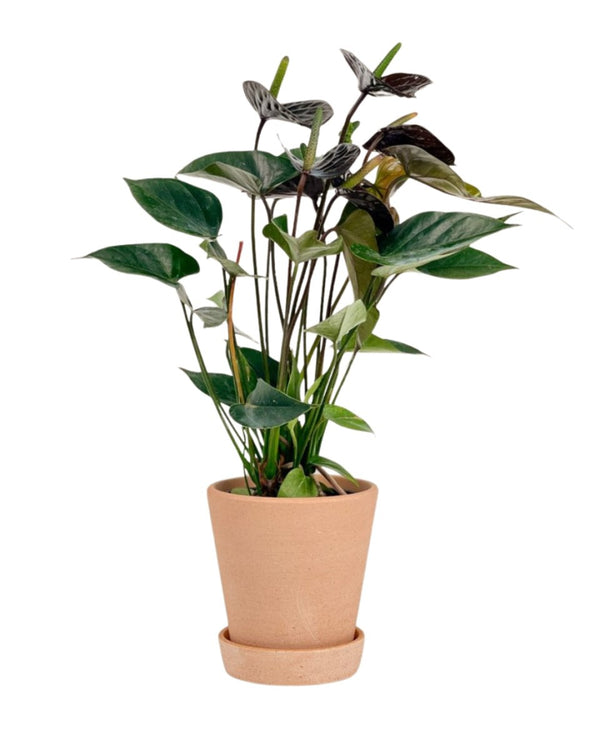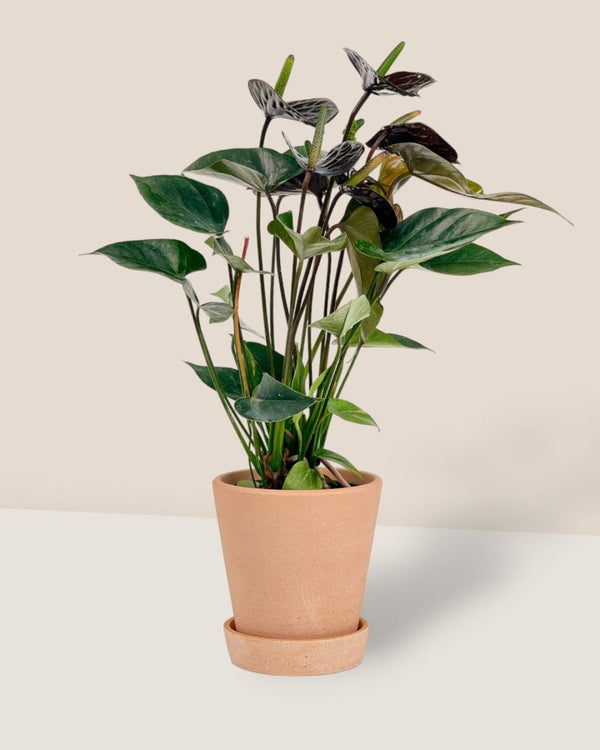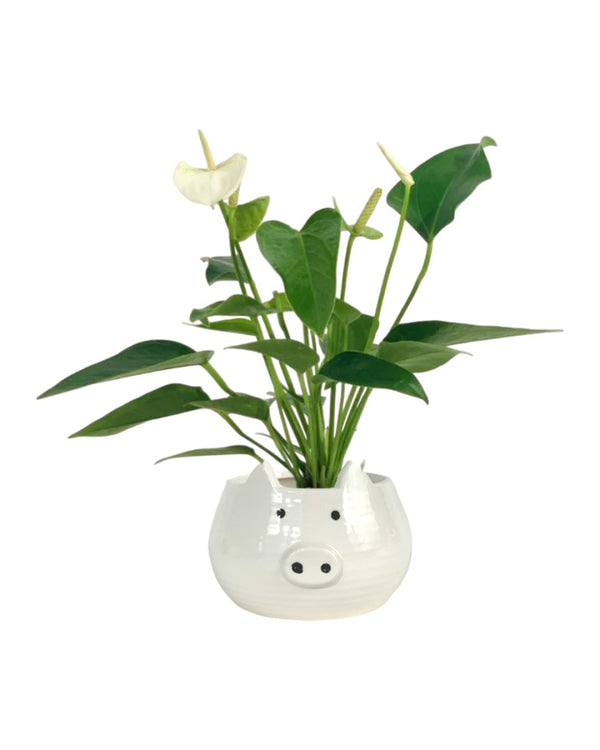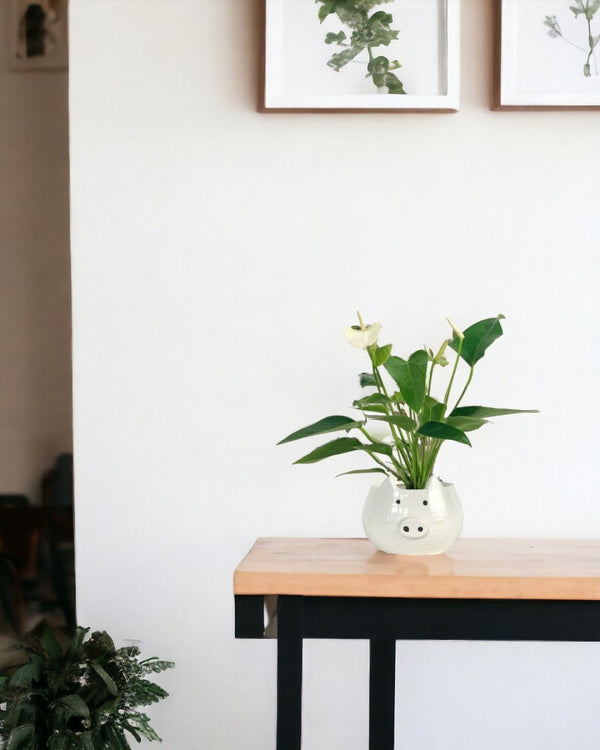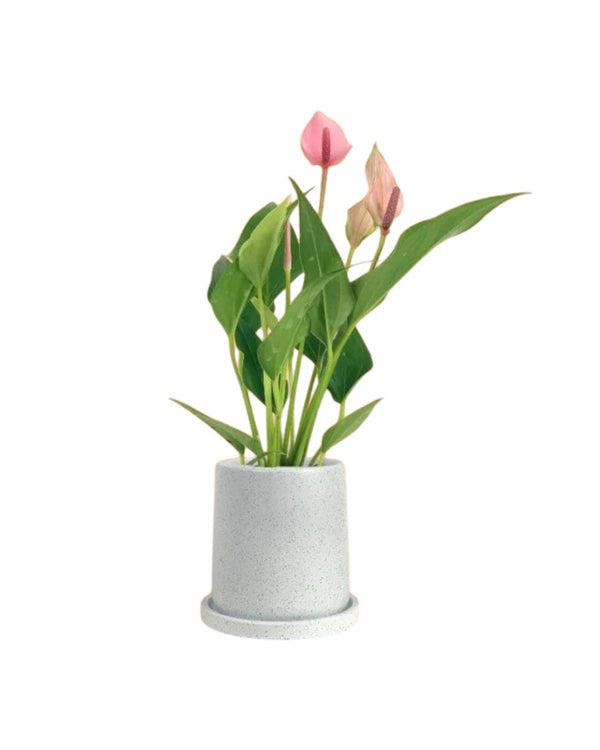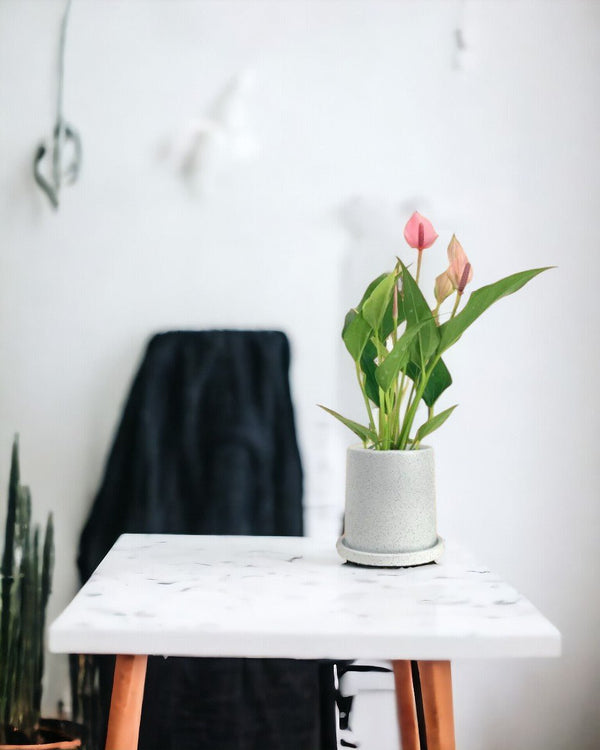Anthurium plants are quickly becoming a crowd favourite due to the variety of interesting foliage they offer. They are relatively easy to care for and can be used to instantly green up a space while keeping the aesthetic simple.
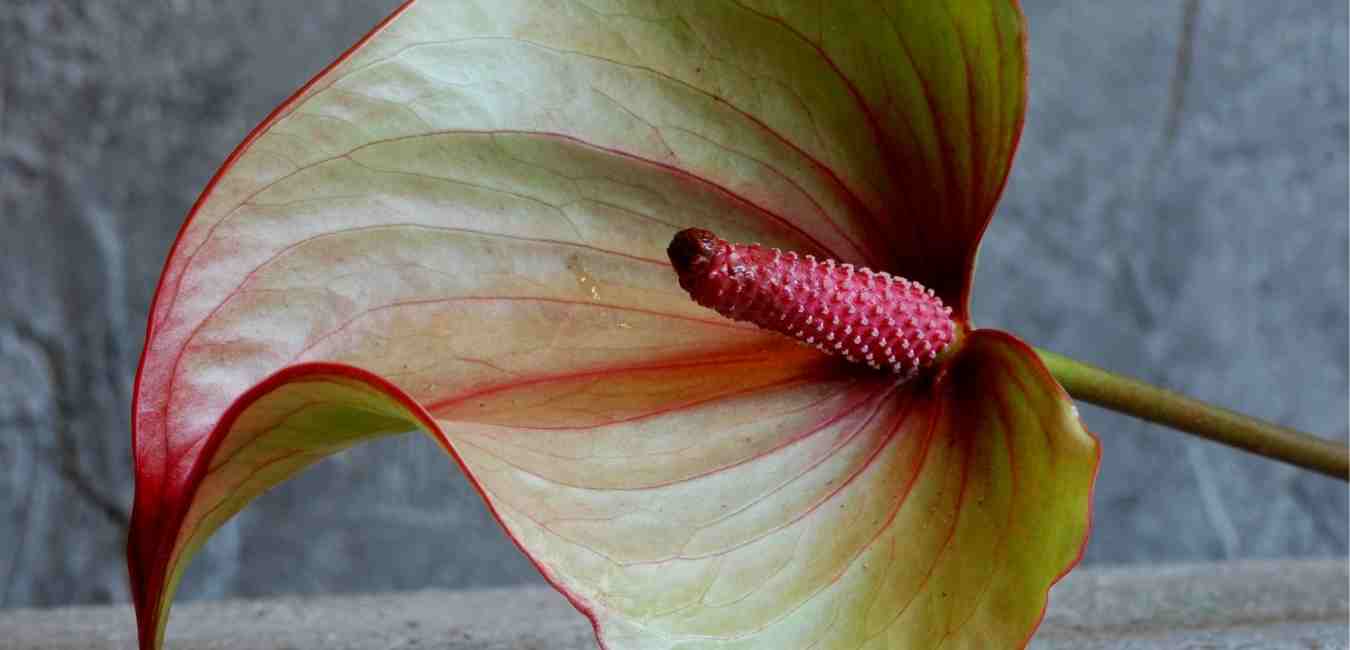
ANTHURIUM
Varieties from our listing
Interested to buy a plant from this group?
See what we have available HERE
Below is a general care guide for Anthurium plants which can slightly differ depending on variety.
Light & Temperature
Anthurium plants can tolerate all levels of indirect light but thrive best in bright indirect light. Providing sufficient light allows your anthurium to grow faster and be more likely to bloom. Be mindful that direct sunlight will scorch the leaves.
They prefer warmer environments, however, they do well in typical household temperatures as well. Be sure to protect them against cold drafts which will cause them to stop growing.
Watering, Humidity & Misting
Allow the top 2-3” of soil to dry out between waterings to ensure the plant is not sitting in water. Anthurium plants are susceptible to root rot, so making sure that excess water is drained thoroughly is an important care tip. They also thrive in high humidity so frequent misting is recommended. You can also setup a pebble tray or a humidifier to ensure a consistent boost in humidity.
Soil and Repotting
Proper Anthurium plant care starts with the soil. They love well-draining potting mix that can retain some moisture. Avoid soil that is too dense as this will retain too much moisture.
To keep the plant growing happy and healthy, you can repot the Anthurium every 2-4 years into larger pots with fresh soil. Anthurium have many thick roots, which when overcrowded, will stunt its growth.
Propagation
Most Anthuriums can be easily propagated by cutting off its roots that start to grow up above the soil level. Dip these roots in rooting hormone and bury them in fresh soil, and in 4-6 weeks, stems and leaves will start growing from them.
They can also be propagated from stem cuttings with 2-3 leaves. Dip the ends of the stem in rooting hormone and directly pot them in fresh soil. Be sure to water thoroughly and provide enough humidity. They should also develop roots and start growing within 4-6 weeks.
Fertiliser
Use a balanced fertiliser formulated for houseplants. Follow directions on the label of plant food.
Toxicity
Anthurium plants are toxic if ingested and should be kept out of the reach of children and pets. Their sap will also cause skin irritation so make sure to wear gloves when handling.
Possible Issues
Under the right care and conditions, your plant will grow happy and healthy. But here are some issues you may encounter while caring for an Anthurium:
Spidermites, aphids, scale and mealybugs - A good deterrent is keeping the humidity high.
Scorched leaves/ Brown Tips - This is usually caused by low humidity, direct sunlight or both. Make sure to mist your Anthurium daily to boost humidity and/or move your Anthurium to an area with indirect light.
Leaves turning yellow/brown - This can be due to root rot and other fungal disease. Make sure that your Anthurium is not sitting in soggy soil.
Brown roots and yellow stems - This is caused by root rot. Repot your Anthurium in fresh soil and remove all rotten roots. Propagate the plant if necessary.
Droopy/Puckered Leaves - A sign of underwatering. If the soil is bone dry, soak the plant in water for an hour to help with water retention and absorption.
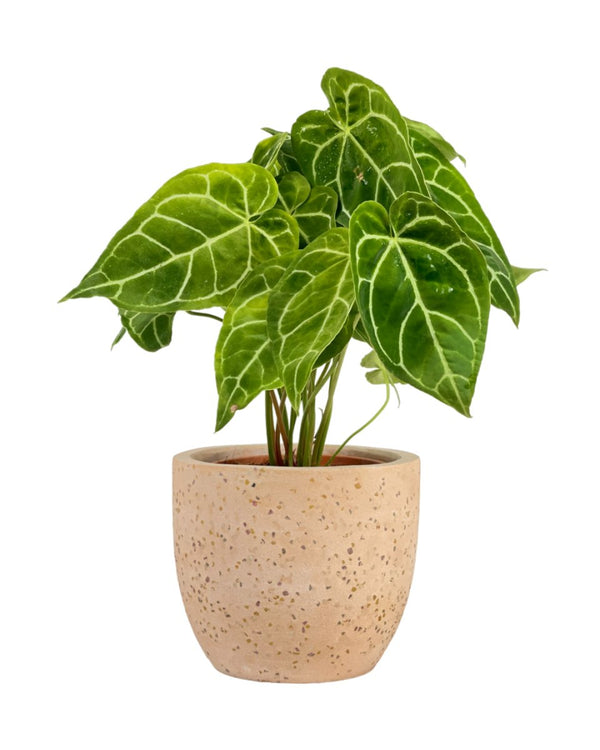
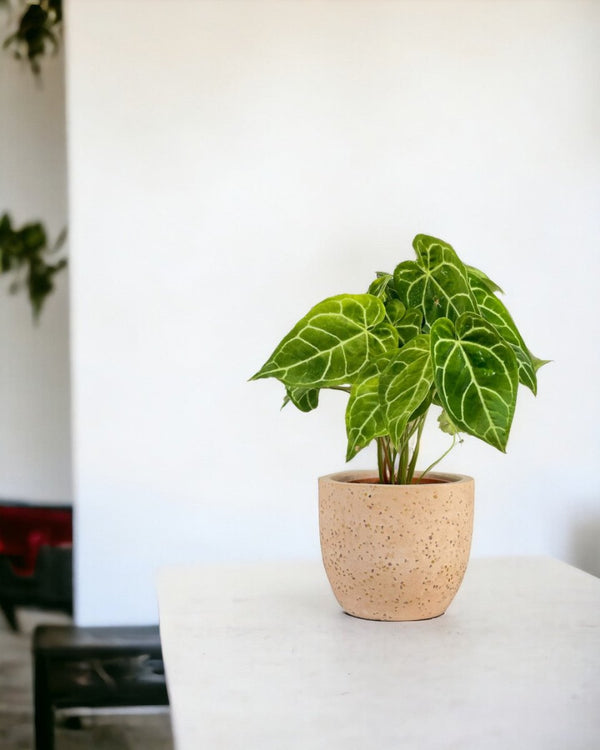
- Regular Price
- from $55.00
- Sale Price
- from $55.00
- Regular Price
- Unit Price
- per
